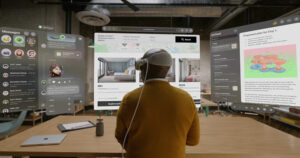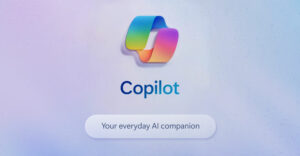
Last week was kind of a disappointment, because I think most of us expected more from the Apple developer conference than it delivered. This is particularly true of the iPhone, which is way overhyped for a generation one product. Most tech companies — and particularly Apple — suck atgeneration one products.
You may recall that the Microsoft Developers Conference started with a keynote that used the time-traveling car from “Back to the Future” to correct a vision-heavy piece. On seeing the market reaction to what Jobs did, I wonder if Steve wouldn’t now like to borrow that car from Bill.
More interesting: I spent much of the week at HP in an executive deep dive. Much of this I can’t talk about, but one thing I can mention is how going green saved HP tons of money and appears to be doing the same for HP customers. I’m a big fan of saving the environment. The idea that there are financial reasons beyond government subsidies and tax credits is something that I think most folks should look into, regardless of the vendor they use.
As always, I’ll close with the product of the week. This time, it’s a product that does Apple TV — another disappointing generation one product from that company — one better.
Is Leopard Rehashed Vista?
My friend and fellow Microsoft watcher Mary Jo Foley went to her first Apple developer conference in years. After seeing what Steve Jobs showed on stage,she concluded that Leopard was just a rip-off of Vista. If you read the piece, you can see how she got there, and that deserves at least some thought. Unsurprisingly, it became a magnet for Apple supporters who were mostly not particularly kind.
Some of the initial comments were along the lines that she should stay in the kitchen barefoot and pregnant, which I’m sure endeared these particular Apple zealots to every woman on the planet. I think a lot of Windows users will likely come to the same conclusion, and their perception is also their reality.
Apple leads with eye candy. What Steve Jobs showed on stage was mostly in Tiger already and wasn’t visually exciting. People can argue overwho copied whom, and whether Apple or Microsoft was first. In a number of cases, Microsoft showed features first, but Apple doesn’t share future products and got theirs to market first — which is what really counts anyway.
It’s important to realize that Vista was over three years late, though, and the fact that Leopard is not much more advanced than the first release of Vista is likely to be a problem.
I can tell this, because the audience at the conference was largely made up of folks who not only develop for the platform, but also use it — and they didn’t seem very excited about what they saw. Being able to run Windows better is likely not on their best feature list, anyway, given who they are.
My read is that Leopard is designed to expand the base of Apple users, as the advancements have largely to do with compatibility and interoperability. Both are requirements for expanding out of a small niche installed base. However, if at the end of all of this, Leopard becomes very similar to Vista but still has compatibility problems, Apple will likely lose more sales then it will get.
Apple doesn’t have a choice between interoperability and eye candy; it has to do both, and if it chooses to go after new customers at the expense of old, it is likely to lose more than it gains.
Remember, Leopard will arrive on top of a mature version of Vista — possibly even SP1 — and many of the problems with that platform should be largely addressed by then. If a buyer simply sees Leopard as a poor clone of Vista, Apple loses — regardless of the reality.
Apple better have somemore surprises coming — with Apple, I wouldn’t count that out — or it could actually lose share at Leopard’s launch. (Be aware, I have yet to see the Leopard hardware, but all of the PC vendors have dramatically increased their focus on design, so Apple will likely have a much higher competitive problem in this area as well.)
iPhone: Generation One Warning
Apple — and most technology companies — has abad history with respect to generation one products. As I’ve mentioned before, HP is now largely staffed by ex-Apple people, and I had a long chat with one last week about why Apple, in particular, is this way.
According to him — and he is now one of HP’s divisional CTOs and one of the folks who was on the original Mac team — Steve Jobs doesn’t believe in market research, focus groups, or anyone else’s opinion about a product. He does believe in sales, and if sales suck, then he will listen to recommendations on how to fix the darned thing.
While it often is the product manager/owner and not the CEO who exhibits behavior like this, it isn’t uncommon. For instance, before Zune was announced, Microsoft’s leadership ignored plenty of information indicating that it would be a train wreck. Many still argue Zune was a success, suggesting the reality distortion field is hardly unique to Apple.
Still, this means that the first version of a product from Apple — and most of the technology vendors — generally is too expensive and too limited, is relatively unreliable, and, well, sucks when compared to the products that will come in the following versions. I’vestarted referring to the iPhone as the “Paris Hilton of cell phones,” which I’m sure both Apple and Paris Hilton appreciate.
I do believe Apple has a winner here, but not with version one. It has too many problems, and Apple is evidently rushing a version two to market. That version will likely address many of the shortcomings of the first, including price. If Apple does get it right, it will be follow-on products that will meet the expectations set by Apple’s market-leading — much like what happened with the iPod (the first version was incredibly unreliable).
If you are in marketing, you shouldcompare aniPhone ad to aZune ad; in five minutes, you will see one of the best and worst examples of marketing in this segment.
Green Can Be Profitable
There are a lot of vendors jumping on the green bandwagon, but most — and I include Apple here — are just giving the effort lip service.HP’s programs go farther and have more depth than any of the other programs I’ve had the opportunity to look into — and I’ve looked into a number.
Partly, this is due to HP’s realization that it could be a differentiator in a market increasingly focused on green initiatives — but the major driver is that the efforts are saving HP tons of cash.
Energy and raw material costs have been increasing dramatically, largely due to the increase in oil prices, and this has been having a severe impact on business costs. Now, while I like green, I’m practical, and I know that if going green is simply a marketing effort, it won’t have any substance.
It will be quickly abandoned, and it will generally consist of additional marketing collateral that in itself isn’t green at all. However, if a company actually makes or saves significantly by going green, then it will sustain the effort — and HP represented that its green efforts are saving or generating significant amounts of money.
If green is important to you, check this effort out, and then ask if the other vendors that are professing to be green are going as far. Ask them if they are saving or making money from their efforts, and then factor the result into your decisions.I believe our survival as a race will likely be directly connected to efforts like HP’s, which combine the environmental needs of society with the financial needs of the company. I don’t believe other models are sustainable or successful over the long term.
Product of the Week
TheNetgear Digital Entertainer HD EVA8000 set-top box isn’t perfect, but it’s the best-of-class in the segment recently made visible by the Apple TV.
What makes this product different: It does a better job of pulling content from your PC; it can also pull from YouTube; and you can use it to record and pull free TV from your PC.
The user interface isn’t as pretty as Apple’s, and it isn’t connected to iTunes, but it will play iTunes music. However, it isn’t tied to iTunes, giving you a choice.
It has built-in wireless, will support a broader section of video and audio sound types, already works with the new class of home media servers, and home network-attached storage — and it will use these resources for storage as opposed to having to have a hard drive itself.
Priced below US$350, it is toward the high end of the price range, but it works — and that makes the price worth it.
Rob Enderle is a TechNewsWorld columnist and the principal analyst for the Enderle Group, a consultancy that focuses on personal technology products and trends.




















































